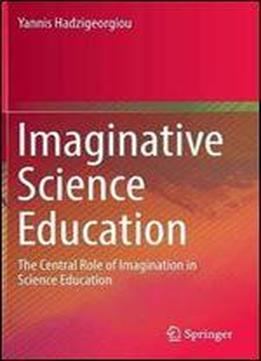
Imaginative Science Education: The Central Role Of Imagination In Science Education
by Yannis Hadzigeorgiou /
2016 / English / PDF
2.9 MB Download
This book is about imaginative approaches to teaching and learning school science. Its central premise is that science learning should reflect the nature of science, and therefore be approached as an imaginative/creative activity. As such, the book can be seen as an original contribution of ideas relating to imagination and creativity in science education.
The approaches discussed in the book are storytelling, the experience of wonder, the development of ‘romantic understanding’, and creative science, including science through visual art, poetry and dramatization. However, given the perennial problem of how to engage students (of all ages) in science, the notion of ‘aesthetic experience’, and hence the possibility for students to have more holistic and fulfilling learning experiences through the aforementioned imaginative approaches, is also discussed.
Each chapter provides an in-depth discussion of the theoretical background of a specific imaginative approach (e.g., storytelling, ‘wonder-full’ science), reviews the existing empirical evidence regarding its role in the learning process, and points out its implications for pedagogy and instructional practices. Examples from physical science illustrating its implementation in the classroom are also discussed.
In distinguishing between ‘participation in a science activity’ and ‘engagement with science ideas per se’, the book emphasizes the central role of imaginative engagement with science content knowledge, and thus the potential of the recommended imaginative approaches to attract students to the world of science.Authors: Hadzigeorgiou, Yannis
Helps the reader understand the centrality of imagination in human thinking and learning
Helps the reader understand both the theory behind the recommended approaches and the practical applications in the classroom
Includes a wide variety of examples to be used in the classroom
Addresses perhaps one of the most important educational problems, namely how to engage students in science
This book is about imaginative approaches to teaching and learning school science. Its central premise is that science learning should reflect the nature of science, and therefore be approached as an imaginative/creative activity. As such, the book can be seen as an original contribution of ideas relating to imagination and creativity in science education.
The approaches discussed in the book are storytelling, the experience of wonder, the development of romantic understanding, and creative science, including science through visual art, poetry and dramatization. However, given the perennial problem of how to engage students (of all ages) in science, the notion of aesthetic experience, and hence the possibility for students to have more holistic and fulfilling learning experiences through the aforementioned imaginative approaches, is also discussed.
Each chapter provides an in-depth discussion of the theoretical background of a specific imaginative approach (e.g., storytelling, wonder-full science), reviews the existing empirical evidence regarding its role in the learning process, and points out its implications for pedagogy and instructional practices. Examples from physical science illustrating its implementation in the classroom are also discussed.
In distinguishing between participation in a science activity and engagement with science ideas per se, the book emphasizes the central role of imaginative engagement with science content knowledge, and thus the potential of the recommended imaginative approaches to attract students to the world of science.
Number of Illustrations and Tables
1 b/w illustrations
Topics
Science Education
Learning and Instruction
Teaching and Teacher Education











